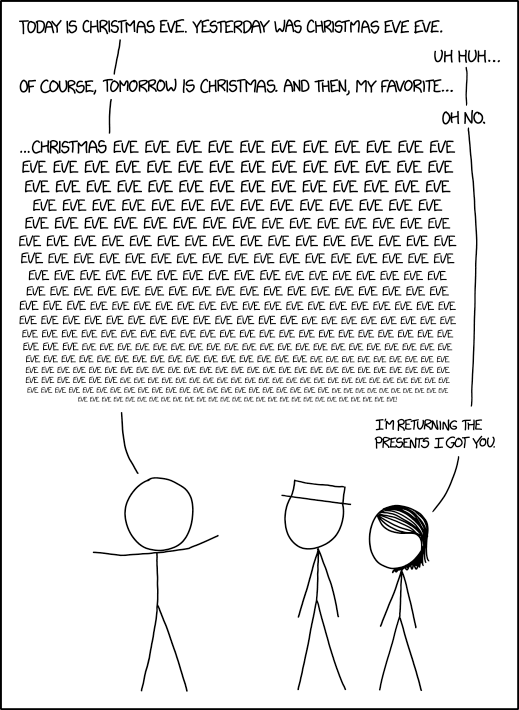For a long time now we have been pounding away at the point that magical heuristics and next-big-thingism are both prevalent and genuinely dangerous. We have combined our faith in Silicon Valley chosen ones who can actually will things into existence with the idea that there is always some next big thing on the verge of upending the world through disruptive technology, and those who do not rush to embrace it will be left behind in the new technology and mocked by history.
This mixture of faith and fear will inevitably lead to spectacularly bad decisions. Fortunately, an increasing number of journalists are finally starting to question this modern mythology. Unfortunately, many of the people who approve projects and make decisions are still in its grip. Even without the added obstacle of cognitive dissonance, it is going to be remarkably difficult to change these people's minds.
Hopefully, someone in a position of authority in Chicago is reading John Greenfield. His recent dismantling of the proposal is the best piece of analysis on the subject I've seen so far.
Since [Chicago Department of Transportation commissioner Rebekah] Scheinfeld’s boss Mayor Rahm Emanuel isn’t running for reelection, it’s likely her tenure will end in a few months. So it’s a head-scratcher why the commissioner recently gave a full-throated endorsement of tech guru Elon Musk’s proposal to dig a tunnel from the Chicago Loop to O’Hare Airport and whisk travelers there at 125-150 mph in 8-16-person pods using “electric skate” technology. Actual transit experts have almost universally dismissed Musk’s plan as a fantasy based on nonexistent tech.
...
On the California presser: “It was a great example of a step forward. As [Chicago deputy mayor Bob] Rivkin said, this isn’t radical new technology, it’s a Tesla in a tunnel. It’s a very basic thing that all Chicagoans can understand and be excited about… [It was] showing proof of concept, essentially.”
What exactly is the step forward here? Musk has previously claimed that his Boring Company’s proprietary digging technology would speed up the digging process 14-fold compared to conventional methods and cut costs by up to 90 percent. But for this tunnel he simply purchased a pre-owned tunneling machine, previously used for digging sewers in Oakland, California, and renamed it “Godot.”
...
But other folks have pointed out that, even if Musk’s $10 million figure is accurate, that isn’t necessarily impressive since the passageway is a fraction of the width of a subway tunnel, only allows travel in one direction, and has no stations or emergency exits. Moreover, the $10 million number reportedly excludes research, design, and equipment, and may not include the cost of labor and property acquisition. [Perhaps it would be quicker to list what it did include – MP]
...
Musk has claimed that, using his hypothetical technology (the LA event was supposed to feature “autonomous electric skates” carrying 16-20 people, but so far Musk has yet to produce such a pod) he can reduce the transit trip from O’Hare from the current 40-45 minutes on the CTA Blue Line to only 12 minutes. When you’re talking about nonexistent tech, you can pretty much make up whatever time estimates you like but, sure, a theoretical 12-minute, $25 ride would likely attract many well-heeled travelers to make the switch from taxi, ride-share, or livery service.
But it’s still worth noting that, unlike the Blue Line, which makes multiple stops between O’Hare and the Loop, including several stations on Dearborn Street within walking distance of Michigan Avenue hotels, the O’Hare Express would pretty much be a one-trick pony. Once you’re dropped off at the single downtown station at Block 37, you’d likely need to catch a taxi, Uber, or the CTA to your final destination, which would add to the cost and duration of your trip, reducing the convenience.
Spielman asked whether the O’Hare express project would make financial sense for Chicago taxpayers. “It would be totally at the risk of the Boring Company,” Scheinfeld replied. “It’s not too often when you have a private partner coming forward offering to make a major, upwards of a billion-dollar infrastructure investment that could have a real catalytic effect on our economy.”
In reality, the project would cost Chicago taxpayers money, potentially quite a lot of it. The project has already diverted significant city staff time and attention from more pressing neighborhood transportation needs. Former Chicago Aviation chief Ginger Evans previously stated that public money would likely be used for building the stations. And then there’s the cautionary tale of Toronto’s Pearson Express airport service, which saw dismal ridership until fares were slashed, which is requiring a public subsidy of $8 U.S. per ride, likely adding up to tens of millions of dollars per year in taxpayer funds.
...
Scheinfeld emphasized that it’s going to be necessary for aldermen to strike while the iron is hot by approving the (not-yet-finalized) contract swiftly. “We are very close here. That’s what we have to keep in mind. We have a great opportunity. We would not like to see this go to waste. Ultimately, this is going to be up for approval of City Council and I hope they don’t let it sit idle and risk that that partner would walk away if it’s not approved in a timely manner.”
…
The reporter asked how Scheinfeld would respond to the naysayers who say that Musk’s plan involves unproven technology. “I would go back and say it’s a Tesla in a tunnel,” the commissioner responded. “We build tunnels all over the world on a regular basis.”
No, Musk’s O’Hare express proposal does not involve driving cars in tunnels. It calls for using autonomous “electric skate” pods that don’t exist.




